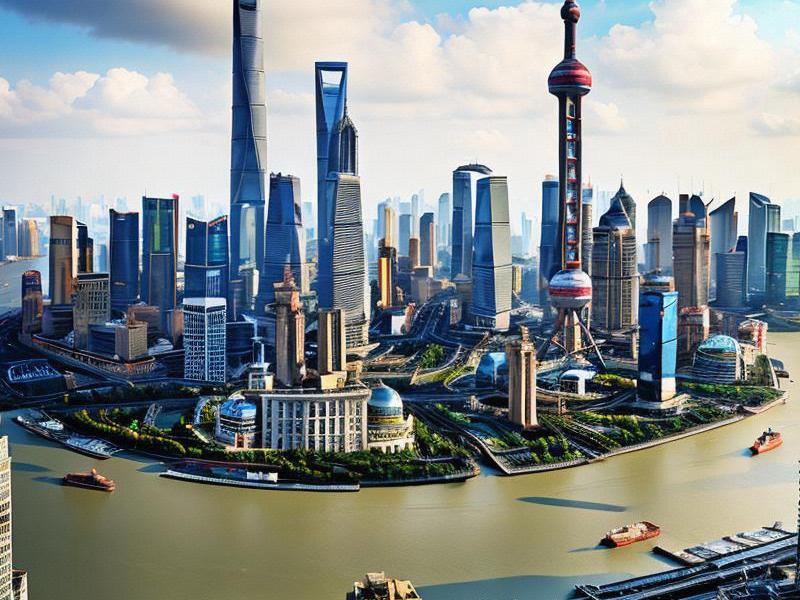This article delves into the profound impact and significant changes that have occurred in Shanghai and its surrounding areas over recent years. It explores the dynamic urban development, economic transformation, cultural evolution, and environmental shifts, highlighting the city's role as a global metropolis and its influence on the broader region.

In the past few decades, Shanghai has undergone a remarkable transformation, emerging as one of the most vibrant and influential cities in the world. This rapid urbanization and economic growth have not only reshaped the city itself but also had a profound impact on its surrounding areas.
One of the most notable aspects of Shanghai's development is its economic transformation. Once known primarily as a manufacturing hub, Shanghai has successfully transitioned into a global financial and trade center. The city's skyline is now dominated by towering skyscrapers, housing some of the world's most prestigious financial institutions. This economic shift has attracted a large influx of talent and investment, further fueling the city's growth.
The impact of Shanghai's economic transformation is evident in its surrounding areas. Cities like Suzhou, Wuxi, and Hangzhou have benefited from their proximity to Shanghai, experiencing rapid industrialization and urbanization. These cities have become important nodes in the regional economy, with a growing focus on high-tech industries, advanced manufacturing, and modern services.
The integration of Shanghai and its surrounding areas has also led to significant changes in transportation infrastructure. The construction of the Shanghai Maglev Train, which connects the city center to Pudong International Airport, has set a new standard for high-speed rail travel. Additionally, the expansion of the Shanghai Metro system has improved connectivity within the city and to nearby regions. These transportation advancements have facilitated the movement of people and goods, enhancing the overall efficiency of the regional economy.
爱上海最新论坛 Culturally, Shanghai has long been a melting pot of diverse influences, blending traditional Chinese elements with Western aesthetics. This cultural fusion is reflected in the city's architecture, art, cuisine, and fashion. The Bund, with its historic buildings and stunning views of the Huangpu River, stands as a testament to Shanghai's rich history and cosmopolitan character. Meanwhile, areas like Tianzifang showcase the city's vibrant arts scene and bohemian culture.
The influence of Shanghai's culture extends beyond the city limits, shaping the cultural landscape of its surrounding areas. Cities like Suzhou, known for its classical gardens and silk production, have embraced Shanghai's cosmopolitan spirit, attracting tourists and fostering cultural exchange. Similarly, Hangzhou, with its picturesque West Lake and tea culture, has leveraged Shanghai's global prominence to promote its own unique heritage.
Environmental changes have also been a significant aspect of Shanghai's development and its impact on the surrounding areas. As the city has grown, efforts have been made to address environmental challenges such as air pollution, water quality, and waste management. The implementation of green initiatives, including the construction of urban parks and the promotion of sustainable transportation, has improved the quality of life for residents.
The environmental impact of Shanghai's development is not limited to the city itself. The surrounding areas have also experienced changes in land use, deforestation, and water resource management. However, collaborative efforts between Shanghai and its neighboring cities have led to the development of regional environmental strategies aimed at mitigating these impacts. For example, the Taihu Lake Basin Authority works to coordinate water resource management and pollution control across multiple jurisdictions.
新夜上海论坛
Socially, Shanghai's rapid development has brought about significant changes in the lives of its residents. The city has attracted a large number of migrants from other parts of China, contributing to its diverse population. This influx of people has created a vibrant and dynamic urban environment, but it has also presented challenges related to housing, education, and healthcare.
The social changes in Shanghai have had a ripple effect on its surrounding areas. Cities like Kunshan and Zhoushan have seen an increase in population and economic activity, leading to the development of new residential and commercial areas. However, these changes have also brought about challenges related to urban planning, infrastructure development, and social integration.
The future of Shanghai and its surrounding areas will be shaped by ongoing efforts to address the challenges and opportunities associated with urbanization and economic growth. Key areas of focus include sustainable development, technological innovation, and regional integration.
上海夜网论坛 Sustainable development will be crucial in ensuring that Shanghai and its surrounding areas continue to thrive while minimizing environmental impacts. This includes the promotion of renewable energy, green building practices, and sustainable transportation systems. By adopting these measures, the region can reduce its carbon footprint and enhance its resilience to climate change.
Technological innovation will play a key role in driving the future growth of Shanghai and its surrounding areas. The city has already established itself as a global hub for technology and innovation, with a strong focus on industries such as artificial intelligence, biotechnology, and advanced manufacturing. Continued investment in research and development, as well as the cultivation of talent, will be essential in maintaining Shanghai's competitive edge.
Regional integration will be another important factor in shaping the future of Shanghai and its surrounding areas. Collaborative efforts between cities in the Yangtze River Delta region can help to address common challenges and leverage shared resources. This includes the development of integrated transportation networks, coordinated economic policies, and joint environmental initiatives.
In conclusion, Shanghai and its surrounding areas have experienced profound changes over recent years, driven by rapid urbanization and economic growth. These changes have had a significant impact on the region's economy, culture, environment, and society. As the city continues to evolve, it will be important to address the challenges and opportunities associated with these changes, ensuring that Shanghai and its surrounding areas remain vibrant, sustainable, and interconnected.
The future of Shanghai and its surrounding areas holds great promise, with ongoing efforts to promote sustainable development, technological innovation, and regional integration. By working together, the cities in this dynamic region can continue to thrive and make a positive contribution to the global community.